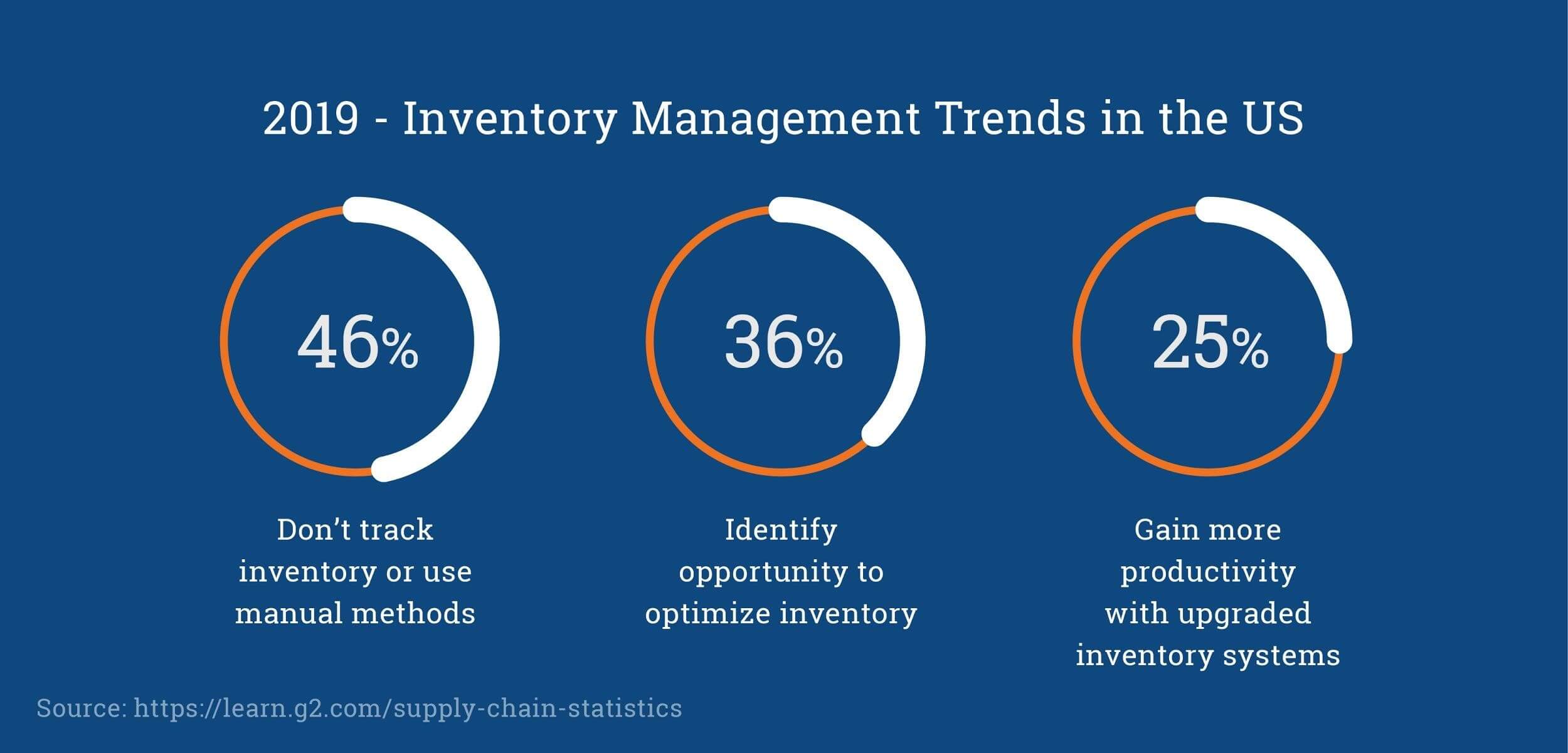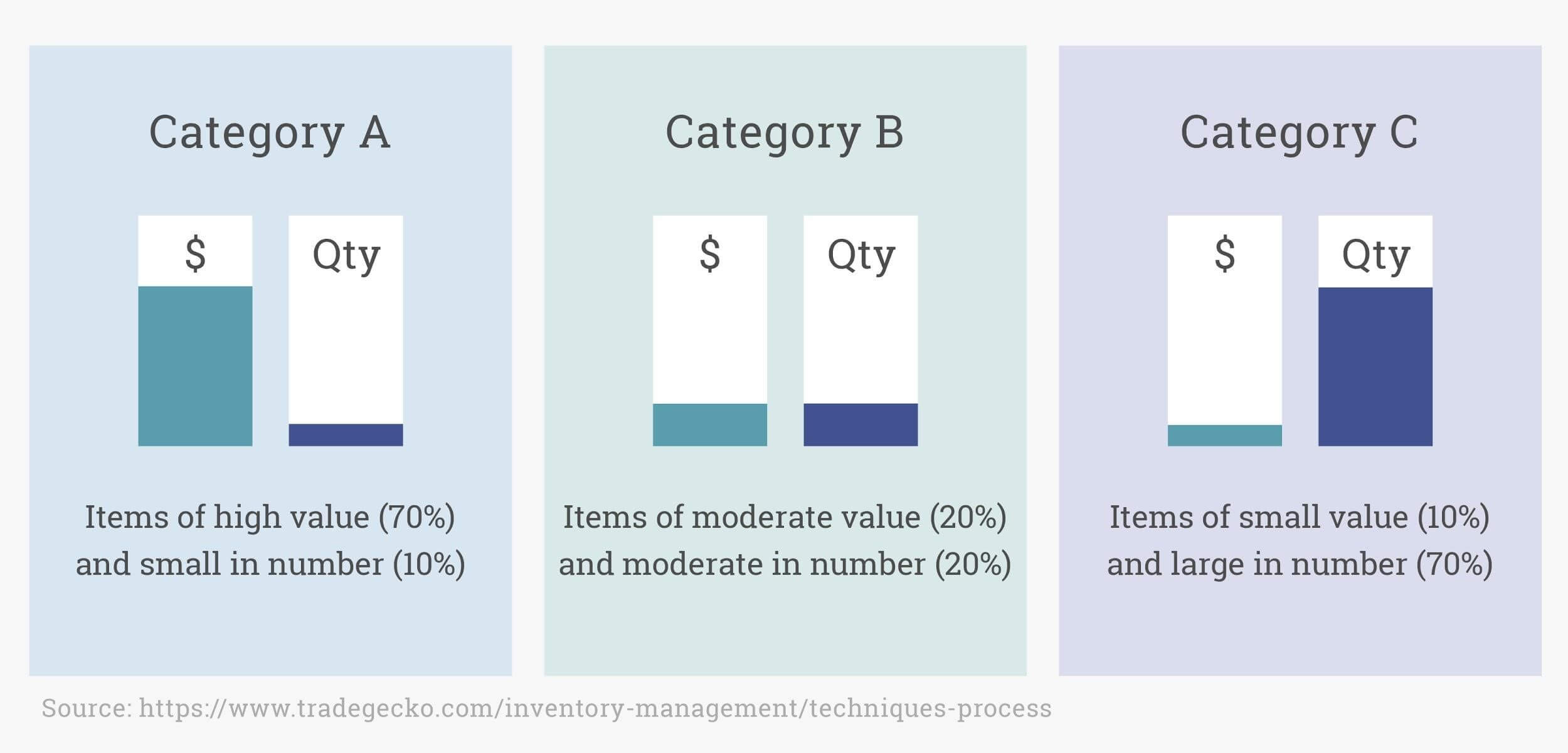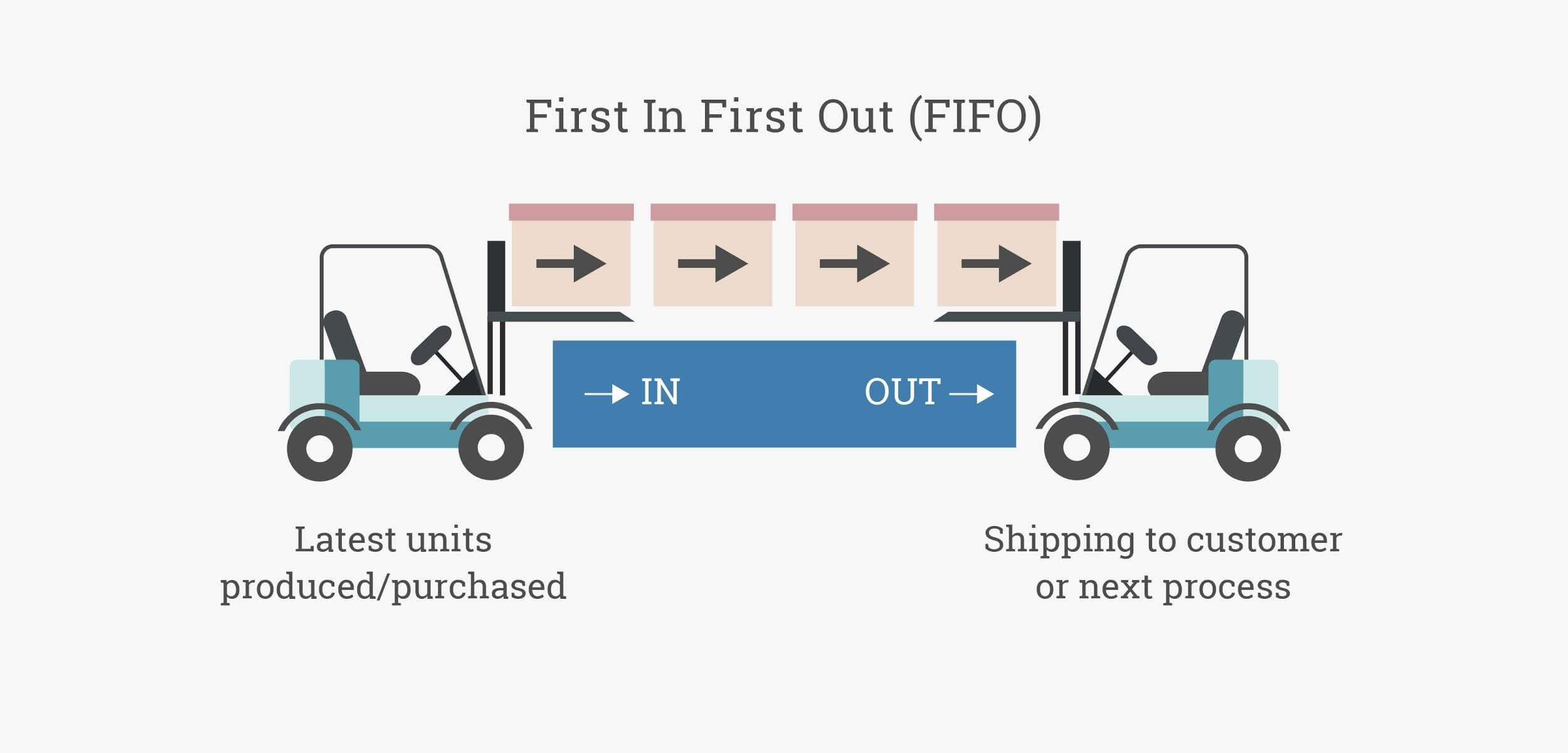What’s Included in this Guide:
- Elements of Inventory Management
- The Most Effective Inventory Management Techniques
- The different Inventory Valuation Methods to Use
- Inventory Metrics to Know for Your Business
What is Inventory Management?
Inventory management is a set of procedures for managing non-capitalized assets (i.e inventory) and stock. Inventory management includes various aspects of stock management such as
- Ordering stocks
- Maintaining storage
- Tracking sales
- Monitoring stock levels
Inventory is a major asset for your business, and it is crucial to manage it in the most effective way possible.

Why it is Important for your Business to Manage Inventory well
Supply and Demand Management
Inventory management includes keeping track of supply and demand data. This data will help you in the long-term to determine which products sell and which doesn’t.
Product Tracking
One of the main advantages of inventory management is tracking of products and their trend. You can prioritize your restocking requirements as per this data. Advertising activities can also be planned to throw light on the best-selling products.
Finance Control
Tracking the sales of products improves your financial management as you will have an idea of what products to invest in and how much stock you should invest in. It also makes bookkeeping easier as tracking the sales and the cost of shipping are already tracked in inventory management.
Theft Control
A streamlined inventory management system gives you clear visibility on the number of products available at any given time. This reduces the chances of theft of physical products or the revenue made through sales.
Customer Satisfaction
Mismanaged inventory directly affects customer satisfaction. You cannot fulfill your customer’s needs if you don’t know what is there in your inventory or when restock will be needed. Your business sure gets a negative review if customers order products that are not in stock.

The Most Effective Inventory Management Techniques
Some businesses understand that inventory management is important for their business but are not sure how to go about effectively managing them. Here are a few techniques that might help:
ABC Inventory Management

ABC inventory management is the technique that categorizes your products based on their value and importance. The products that fall under the ‘Category A’ are highly valuable while products under ‘Category C’ are comparatively the least important. There are a number of factors that affect the value of a product like cost significance, consumption value, and inventory value. However, there is no hard and fast rule on what constitutes the value of a product and it also varies from business to business.
The advantages of ABC inventory management are,
- It enables inventory optimization.
- It aids in effective cost and time management.
- Analyzes product popularity and helps demand forecasting.
Just In Time (JIT) Inventory Management
This technique works best for businesses that sell perishable goods such as Floral Business. In this technique, the stocks are filled only a few days prior to distribution to reduce frozen capitals. Your business requires to be agile if you want to follow this technique and your team should be ready to handle short inventory cycles.
The Advantages of JIT Inventory Management are,
- It improves cash flow
- This technique lowers deadstock
- It decreases inventory holding costs
Bulk Shipment
If your business is stabilized, has consistent inventory requirements with high customer demand, then you can opt for bulk shipment. According to this technique, bulk orders reduce inventory costs and effort. It is one of the most popular techniques that can be applied to businesses with high customer demand.
Advantages of bulk shipping are,
- It has the highest potential for profitability
- The number of shipments reduces considerably
- The probability of stock-outs are low
Backordering
In this technique, you can receive pre-payments for products that are not in stock. Customers are ready to wait a few days to get their hands on exclusive products but, ensure sure not to build a bad reputation for constantly getting payments for out-of-stock products.
Advantages of back-ordering are,
- It provides more flexibility for small businesses
- It lowers holding costs and frozen capital
- Increases sales and cash flow
Consignment
If you have just started a business and are highly uncertain about your stock requirements then you can opt for consignment. In this technique, the wholesaler will promise the stocks to the retailer but will hold the actual goods until the retailer finds a customer. This method will work only if the wholesaler has immense confidence in the retailer.
There are many advantages for retailers through consignment;
- Minimum capital involved
- You can display a wider range of products without actually investing in them
- The risk of losses is less
Dropshipping and Cross-docking
If you are a small business with no inventory space, this technique will be really helpful. With the dropshipping type of inventory management, you can directly ship the products from your wholesaler to the customer. Cross-docking is also a similar practice where the stock gets transferred from one transport vehicle to another without a requirement for storage space.
Advantages of this technique are;
- No holding costs
- High potential for profitability
- It saves a lot of effort and manpower
Inventory Valuation Methods
The accounting for your business mainly includes your inventory costs. If you are a business that buys from different vendors, the accounting gets complicated. There are various costing methods you can opt to make your inventory accounting less complex.
First In, First Out (FIFO)
In this valuation method, it is assumed that the goods that enter the inventory first are sold first. This means the oldest inventory items are sold first and this method is used widely by many businesses especially those that sell perishable products like food.

In this method, the value of the stock is determined in the following way,
First stock: 10 goods valued at $10
Second stock: 30 goods valued at $30
If 5 shirts are sold at the end of the month, it is valued as $50 [5(Number of goods from first stock) * 10(value of each product))
And if 20 shirts are sold at the end of the month, it is valued as $400 [10(number of goods from first stock) * 10 (cost from first stock) + (10(number of goods from second stock) * 30 (cost from second stock)]
Last In, First Out (LIFO)
As the name suggests this method is exactly the opposite of FIFO. Here, the goods that enter the inventory last are sold first. The cost of the latest inventory is considered for valuation making the sales value go up if the costs of goods go up. Businesses that sell small number of highly valuable goods like collectible watches might use this method.
For example,
First stock: 10 goods valued at $10
Second stock: 30 goods valued at $30
If 5 goods are sold at the end of the month, it is valued as $150 [5 (number of goods from second stock) * 30 (cost of second stock)]
And if 20 goods are sold at the end of the month, it is valued as $600 [20 (number of goods from second stock) * 30 (cost of second stock)]
Weighted Average Cost (WAC)
If your business has inventory that has more or less uniform value for its products, you can use this valuation method. In the weighted average cost method, the average costs of all the products sold at a given period of time are calculated. This type of valuation is used by lumber yards that sell sheets of planks.
Considering the above example for this method,
Total number of goods is 40 and their value is $1000 [(10*10) + (30*30)]. So, the weighted average cost is $25. If you sell 20 goods in a month, then the cost of goods sold is $500 (20*25).

Inventory Management Tips for Small Businesses
Know your Product Types
- Item: These are single products that enter your inventory that does not need any assembling effort or special packaging.
- Assembly: The products that need to be assembled once they enter the inventory fall under this category.
- Family: Similar products with minor variations like size or color fall under this category.
- Case Pack: Products that come as a bundle or set come under this category.
Trust the SKUs and Barcodes
All the products of your business should have SKUs and RFID tags with which you can identify them. These SKUs make it easy for you to identify and track a particular product.
Periodically Audit your Stock
You might be having a well-equipped inventory management software for all your stock updates, but it is vital for you to manually count the stocks periodically. Tallying the stocks with the records is very important to control product theft and stock mismanagement.
Focus on Quality Control
Inventory management also involves checking the quality of all the products entering or leaving the inventory. Businesses, especially in the starting stages, have to be very careful about the products they deliver. This builds brand loyalty.
Have a Dedicated Stock Controller
As a small business owner, you might be under the assumption that your business is not large enough to have a dedicated resource for managing the stocks. But, it is better to have a stock controller who takes care of stock audits and is aware of the stock levels and purchase of products at all times.
How to Monitor your Inventory
A dedicated stock controller will need an inventory management system to maintain accurate records. You have to opt for an inventory management system for this. If you feel your business does not need an advanced inventory management system, you can start with a basic excel sheet. If your business requires a dedicated software but your finances are tight, you can opt for small business funding options that can help you with immediate cash.
Features to look for in an Inventory Management System
Inventory Management Software Features
- Barcoding
- Reporting Tools
- Inventory Forecasting
- Inventory Alerts
- Accounting Tools
Manufacturing Inventory Management
- Material Tracking
- Inventory Levels for Parts and Finished Product
- Automatic Reordering
- Integration with ERP and Maintenance Software
Warehouse Inventory Management
- Advanced Barcodes with supporting QR code and other standard
- Multiple Location Support
- Shelf and Bin Tracking Systems
- Order Picking Support
Retail Inventory Management Software
- Order Picking Report
- Automatic Reorder
- Inventory Forecasting Tools
- Broadcasting Support
Inventory Metrics you Should Know
Once you have decided the inventory management software for your business, you should now understand the metrics you should follow that adds value to your business.
- The Inventory Turnover: It is the total number of times the inventory is sold within a year (or a particular period of time)
Inventory Turnover = Cost of goods sold / Average Inventory
- Gross Margin Percentage: This calculates the percentage of sales revenue for your inventory.
Gross Margin Percentage = (Sales – Cost Price) / Sales
- Customer Order Fill Rate: This value shows how well you serve your customers.
Customer Order Fill Rate = Orders shipped / Total number of orders
- Cycle Time: This value is associated with the time taken to finish an order
Cycle Time = Ship Date – Order Placement Date
- ROI: The Return on Investment calculates the earnings you made for every dollar invested in the inventory.
ROI = (Sales/Avg. cost of inventory) x Gross Margin
Inventory management can be unique for each business. Some businesses might just need a single technique or valuation method for their inventory to run smoothly while another business might require a mix of many techniques and inventory management systems. As a small business owner, be open to trying out the different ways of managing your inventory and zero in on the best-suited methodology.






